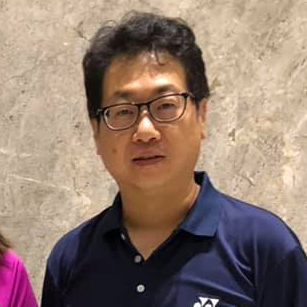Praise For: Evaluation and Corrections of the Sphenobasilar
Hear directly from our students about the benefits of our program.
-

Peter Wyland, DC
This program was well put together with the anatomy, clinical exam and treatment it flowed and was easily understandable.
The sphenoid/occiput is the main culprit in most of the head and cranial issues. Very important in practice.
All of Dr. Rosen and Dr. Watson classes should be a prerequisite.
Everything is top notch. I took the class to be at home first and see if I could retain it and keep up. At 71 I held my own and I asked the doctors several interesting questions better than any course on the cranium I have taken.
-

Dr. Chang-Jui Lee
“I took this program to improve the knowledge of cranial adjustment. I know where to adjust.
Convenient for long distance study especially for time zone different. Thank you.”
-

Dr. Tai Hong Andrew Lung
“I took this course because some patients may not be capable of typical chiropractic adjustment and may need another kind of adjustment without a thrust. Hence, I am seeking another technique to balance the patient’s spinal system in a more gentle way.
I would recommend this course as I think the information you delivered is very inspiring, and I would like to find out more in the other lectures to be organized in the future. Thanks for your instruction; I am looking forward to using the skills in my daily practice very soon.”
-

Eileen Keenan, DC
Great information on working with children to correct sphenobasilar distortions.
With a bit more practice and review I wish to incorporate this work into my daily practice. I used it with a baby with head tilt. Mother noticed great improvement after 1 visit
I recommend this class. We need to be able to help babies.
-

Dr. Lilian Aliberti
“I decided to take this course knowing the importance of sphenobasilar in the treatment of my patients.
I used this technique with a 7-month-old baby with facial asymmetry, who had never slept more than 2 hours in a row and had great difficulty eating, and had a lot of gag reflexes. After the corrections I learned in the course, she slept for 4:30 the first night, and the next day she ate without any gags, after a few more sessions the asymmetry disappeared. Her mother said it was a miracle!
This course is incredible, the way Martin and Nancy explain it is very easy to understand and be able to put it into practice straight away. Learning about the sphenobasilar is very important when you want to work with craniopathy. So, don’t miss this course!
I’m a fan of this couple and learning from them is addictive. I take all the courses and every time I feel thirsty for more.”
The SOT® Pediatric Certificate Program
Demonstrate your commitment to your profession and patients, enhance your skills, and place yourself on the road to mastery in the art of chiropractic adjustment.

